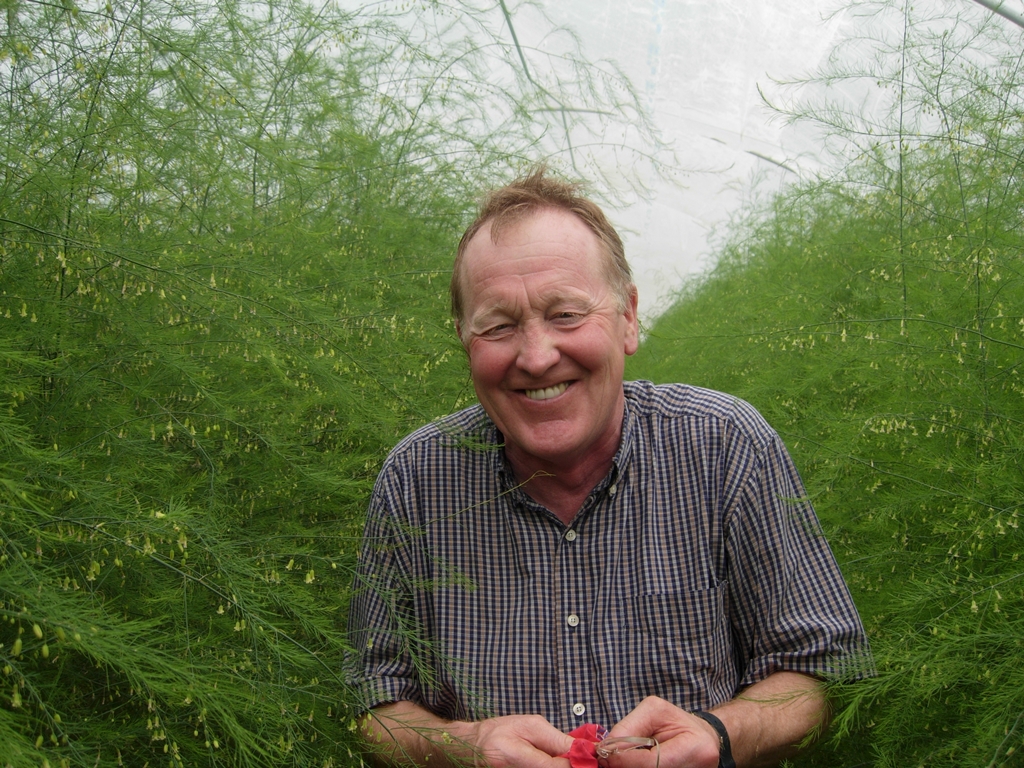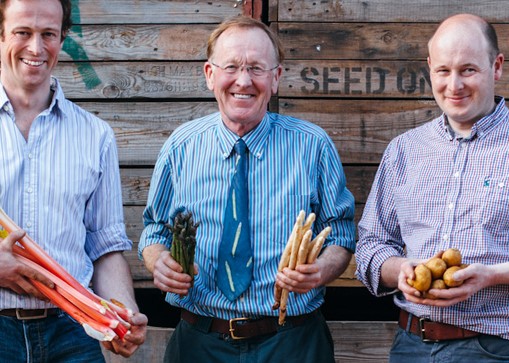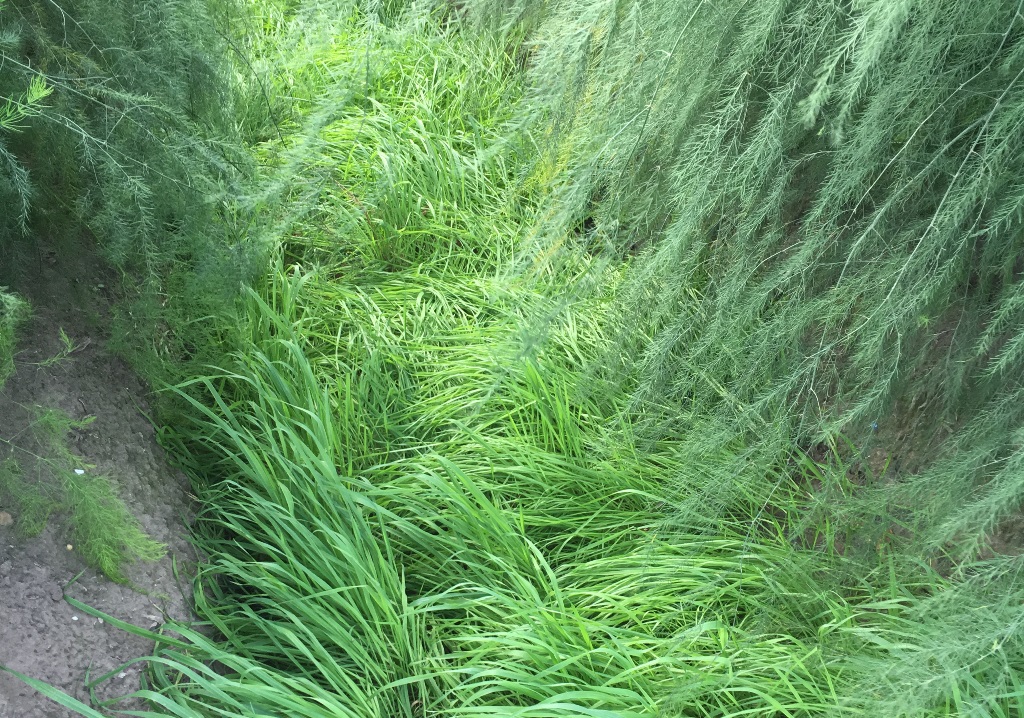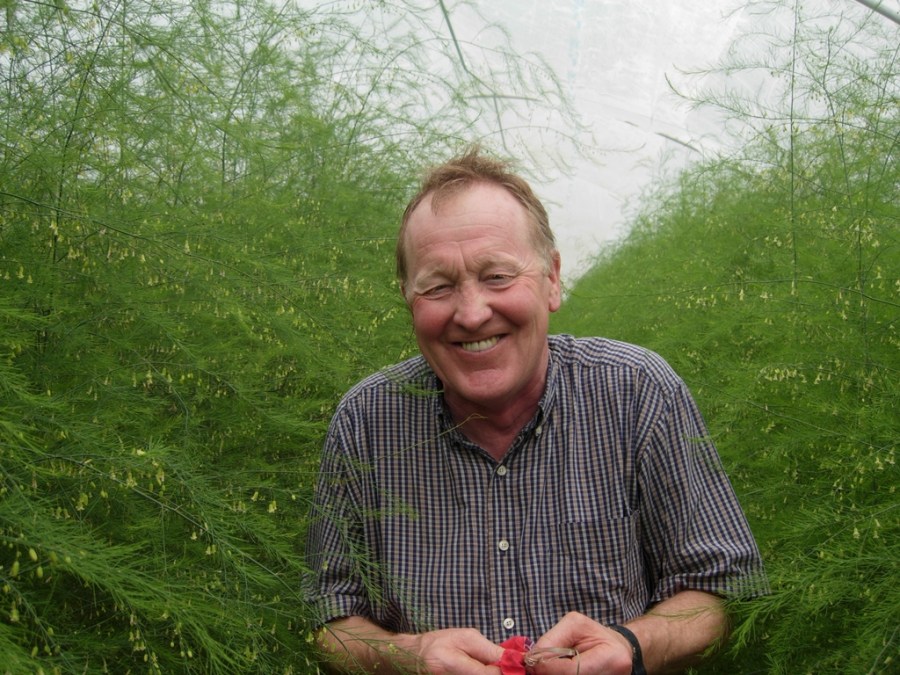
A hunger for learning has led a Herefords grower to farm at the cutting edge. As the industry faces enormous change, CPM asks out why he sees the Agri-tech centres as vital stepping-stones for the future.
CHAP is a stepping stone to deliver the scientific and technological revolution that UK farming must adopt to survive.
By Lucy de la Pasture
The red soil of South Hereford is home to more than its fair share of entrepreneurial farmers. Yet one family-run farm has a reputation for being well ahead of the curve.
In less than a century the Chinn family have progressed from a tenant farm of just 50ha to a farming enterprise of over 1,400ha, with land as far afield as Norfolk and Suffolk. As well as producing combinable crops and potatoes, the farm business has diversified into producing and packing speciality fresh produce under their own Wye Valley Produce banner.
Much of Cobrey Farm’s growth has taken place under the guardianship of third generation Chinn, John, who took over the management of the farm when he graduated from the University of Nottingham with a first-class degree. Talking to John, it’s clear Research and Development lies at the heart of the business and is something he’s passionate about.
“We invest heavily in the R&D of new crop varieties and growing techniques and have pioneered extending the growing season while increasing flavour, quality and sustainability, as well as reducing production costs,” he explains.

Chris, John and Henry Chinn (left to right) have diversified into producing and packing speciality fresh produce under their own Wye Valley Produce banner.
With 45% of the UK’s asparagus production under their belt, the Chinn’s entrepreneurial approach to farming is proving successful. Production of green and fine beans on the farm is replacing some of the Kenyan imports, ticking a key retailer box by enabling them to source home-produced produce when in season. It’s a similar story for rhubarb and blueberries and new crops are in the pipeline for 2018. And then there’s the Castle Brook vineyard which is producing award-winning wines yet John modestly describes as ‘a bit of fun’.
With sons, Henry and Chris, now at the helm of the farm on a day-to-day basis, John’s spirit of adventure has led him to become chair of the Agri-tech Centre for Crop Health and Protection (CHAP), a role he regards as a real challenge. But he sees the Centres as having a vital role to help growers through the transformational change of what he describes as ‘the new agricultural revolution’ the industry is stepping in to.
Fuelling the change is ‘disruptive technology’, which by definition is something that will force growers to look at their businesses and do things differently. And that means think differently, says John
“Henry Ford famously quipped that if he’d asked what people wanted, they’d have said, ‘faster horses’.”
To make change, growers need access to a pipeline of science and John uses a quote from Sylvia Plath’s diaries to make that point. “’I am so firmly convinced that knowledge comes through science. I am desperately eager to learn more and more. It is so easy to be satisfied with yourself if you aren’t exposed to people further advanced.’ That in my opinion is why CHAP exists,” he adds.

Asparagus undersown with rye in August to help stabilise the soil and mop up nutrients.
John points out the changes in agriculture have been huge since the post-war era of production at any cost.
“When I started farming in the early 1970s, I had weekly visits from my local ADAS advisor. He brought knowledge with him, but he also took knowledge away. The service was free at the point of delivery, paid for by government.
“We had government-financed local Experimental Husbandry Farms (EHF’s), where new knowledge from our Universities, Colleges and Research Institutes was translated into practical farming benefit. Over the years this conduit, feeding new knowledge to our farmers, was broken as EHF’s were sold off and ADAS became a fee-charging service.”
Although in the UK we pride ourselves on our farming prowess, figures suggest that over the last 30 years our productivity has dropped behind the rest of Europe and the USA. Since 1980, the UK has seen an ongoing 1% per year decline in self-sufficiency in food, he notes.
John sees the purpose of the Agri-tech Centres as the 21st century means of translating new knowledge and understanding of science and technology into improved farming practice, ultimately kick-starting UK productivity again.
“We have some work to do because this new way depends on our industry making a financial contribution. We need to show financial advantage to individual businesses as well as UK farming as a whole,” he acknowledges.
The increased focus on knowledge exchange by AHDB acknowledges that translating research findings into the field is crucial and is welcomed by John. But he believes that it’s just as important to keep the engine of research running so that UK agriculture doesn’t stand still.
This is an area where the umbrella of Agri-tech centres will have a key role to play by helping facilitate research where it’s needed. Using CHAP as an example, John explains the top-tier of membership will provide opportunities for collaboration in market-relevant research projects. By working together, research can be directed better towards the needs of the industry.
“Innovate UK funding is available which will fund 70% of research but still allows the companies that have invested the other 30% to retain the intellectual property,” he adds.

CHAP is equipped with high-tech mobile laboratories, which can provide growers with instant answers to crop health problems.
Further types of CHAP membership are planned that will directly benefit growers, or groups of growers, hints John, and will be revealed in the next few months.
Although CHAP has been in existence for around 18 months, John is very aware that many growers either aren’t familiar with its concept or aren’t entirely sure what it will be able to deliver to them. To help illustrate how the Centre will integrate into farming practice in the future, he explains his vision of what farming may look like by 2030.
“In recent years, there’s been technological progress on many fronts that provide a hint of how agriculture may evolve in the coming decades. This year we’ve seen the reality of the ‘hands-free hectare’ at Harper Adams University. But the future isn’t just about driverless tractors, automation and robots.”
The changes that will take place over the next few years will be much more comprehensive, he believes.
“It’ll be unacceptable to use a prophylactic spray across the whole of a field. We’ll rely on targeted agrochemical applications applied on a reactive basis. It’s something we, along with many other growers, are already doing with fertilisers with variable rate application. At Cobrey we’ve been using Soyl for 12 years and are now finding that fields are becoming more uniform as a result.
The challenge for using fungicides and herbicides in the same way is greater, but John believes that automated pest and disease recognition and diagnostics will become the norm.
“Fungicide applications will happen before symptoms are even visible to the naked eye. Sensor technology is advancing fast and it’s already possible to pick out ‘sick’ plants, which generally have less water within their tissues as a precursor to fungal infection,” he explains.
Monitoring is one of the first functions of CHAP that will provide growers with a tangible benefit in the very near future. A network of 32 spore-traps is now in place across the UK and will soon be providing advance warnings to growers of wheat, barley, oilseed rape and potatoes.
“We’re working towards a fully-automated network which will be equipped to analyse the DNA of anything it catches and so provide real-time information on any disease spores/insects present,” he explains.
Even more importantly, the spore traps will have the capability of analysing the strain of pathogen present. That means potato growers will know when the fluazinam-insensitive A37_A2 strain of Phytophthora infestans is prevalent and be able to modify their blight programmes accordingly.
Likewise, cereal growers will have information on the strains of septoria that are airborne. Information that’s likely to impact on fungicide programmes, especially as strains with insensitivity to SDHI chemistry become more common in the population. A mobile high-tech CHAP laboratory will also be on hand to provide growers with instant answers to crop-health problems.
As well as increased use of biological control of pests, weeds and diseases, he believes crop modelling and the interrogation of big data platforms will result in increased yields and quality.
“We’re now in a digital age where technology can be delivered without relying on input from the grower. It’s one of the reasons uptake of decision support systems has been relatively limited,” he believes.
“We’ve had excellent models for blight forecasting and irrigation scheduling in potatoes available for years, but I believe their success has been hamstrung by a reliance on input of data which requires someone to go out into the field and take measurements, such as ground cover, which can get overlooked during busy periods on the farm. Now it’s becoming possible to use satellites, planes or drones to populate models with this data autonomously.”
John envisages that we’ll also be focusing more on producing healthy foods, of high nutritional quality to the consumer. He sees some of the modern plant breeding technologies using CRISPR as having a crucial role to play.
“The industry can’t make a mistake again like it did with Roundup Ready. Any breeding techniques need to deliver a trait that is of direct benefit to the consumer and be one that could have theoretically occurred naturally.
“For example, if we could breed a potato with significantly less digestible starch then this would help consumers with weight loss – providing a satisfying meal without the calories,” he suggests.
John has changed his own farming practice as a direct result of studies on the farm over the years, bearing testimony to the fact that knowledge precipitates change. He’s been championing fully replicated on-farm trials at Cobrey for decades, seeing them as a means of generating research results directly relevant to his own farming operation. One of those changes was instigated after PhD students from Cranfield University used the farm to study ways to help prevent erosion.
Much of the land surrounding Cobrey is sloping and soil erosion and run-off are a real problem. Both problems are something he sees as being enormously important and he admits that there’s been a sea change in his own attitude over the years.
“We used to consider soil washing onto the road or into the brook as a sign there’d been some heavy rainfall. It’s now something we try hard to avoid happening and, for the first time, not one field will be left bare at Cobrey over the winter period.
“20% of the asparagus grown had rye broadcast over the fern during Aug and other bare land has been planted with sheep-keep or green cover crops to mop-up any excess nitrogen and stabilise the soil, which can prove highly mobile when wet,” he says.
“This technology is now being adopted by maize growers as a way of stabilising the soil and mopping up nutrients,” he adds.
The learning curve for UK growers will be a steep one as agriculture changes and John urges his fellow growers to consider how they can engage with CHAP.
“CHAP is a stepping stone to deliver the scientific and technological revolution that UK farming must adopt to survive. CHAP membership will unite like-minded, forward-thinking people and together we will make change happen.
“After Brexit, the single farm payment will stop. There’s a widespread belief that greening and environmental measures will continue to be supported. Less favoured areas may well continue to receive some financial support, but I can’t see acreage-based payments continuing for the rest of us.
“I’m campaigning for the government to support research and development, to include some sort of translational service to help farmers adopt improved production practices. In the years ahead, a thriving UK farming industry will depend on increased productivity and the adoption of sustainable systems. CHAP is here to help us do this.”
Purpose of the Agri-tech Centres
The four Agri-tech centres are essential catalysts for change. Together, they serve the needs of everyone involved in the UK agri-food sector, from farmers to advisors; scientists to suppliers; processors to retailers.
The centres, each with their own unique focus, are a gateway for companies and individuals seeking access to the very best science, expertise and technologies. They are also a stimulus for new research, technology and the transfer of knowledge onto farm.




